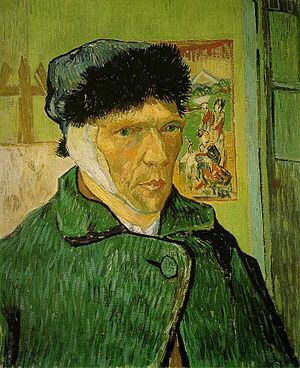How Mental Health Has Affected The Creation of Art Throughout History
March 20, 2020
It is a well known fact that the creation of art can help a person calm down and relieve stress. Studies have shown that self-expression through art can help people with depression, anxiety, and even cancer. Even if it doesn’t help that person with their issues, art creation is shown to be a great tool to get to our innermost thoughts and provides time for introspection and to find deeper meaning. Through this lens, we can see how, throughout history, the creation of art has been seriously changed due to mental illnesses and art’s healing qualities.
Art has led the way in seeing mental illness not as alien or contemptible but simply part of the human condition. Artwork from the Renaissance to modern times has celebrated and opened society’s eyes to mental illness. Their works are shown to shed light on what is going on within countless people around them and to get rid of stigmas surrounding mental illness in our society. Modern works of art such as Ghost Whisperer by Eva Charkiewicz and Depersonalisation by Morgan Page show personal experience incredibly within their art, and yet are still put forth into the public to help the population stop talking about mental health as something to be afraid of.
Historically, some of the most famous artists have struggled with mental health issues, such as Vincent Van Gogh, Pablo Picasso, Monet, and Frida Kahlo.
Van Gogh is probably the most well known artist whose art was affected by mental illness, as the fact that he cut off his own ear in a manic episode is very widely known. Van Gogh is one of the most famous post-impressionist painters of all time; yet, while he was alive, he could barely sell a painting. Van Gogh is thought of to have struggled with depression, bipolar disorder, and borderline personality disorder for most of his life, up until he shot himself in the stomach and died in 1890.
Van Gogh’s piece Self-Portrait with Bandaged Ear (above, 1889) depicts himself after he cut his own ear off. He depicts himself as neither sane nor insane, but as another human being who has courage and deep honesty. Van Gogh is possibly one of the most renowned artists of all time, which shows how people who are struggling are still more than capable of doing amazing things.
The Scream by Edvard Munch is another well-known painting and is referenced in much of popular culture. Munch struggled with neurasthenia, a clinical condition associated with hysteria and hypochondria, for his entire life, while also battling with the death of his mother and his sister. The Scream was created to show how the desire to scream out in pain and isolation under the ‘wobbly sky’ is a sane response to an insane world. The Scream is universal.
Munch, when describing how his struggles with mental illness affected him and his art stated, “I can not get rid of my illnesses, for there is a lot in my art that exists only because of them.”
Pablo Picasso, while known for his abstract art, in the earlier days of his career was greatly affected by the suicide of his best friend and the death of his sister and suffered from intense depression because of it. It was these emotions and grief that poured out into what is widely known as Picasso’s Blue Period. He painted in a variety of cold colors, melancholy blues, dusky grey, and sickly greens. Picasso’s subjects were mainly outcasts of society and people who had experienced great tragedy, such as the homeless and prostitutes. Some of Picasso’s best and most well-known work was done during this period, and it is known to be one of the most honest and open art series of all time.
It is a question, however, if these artists would have created such famous art if they had not struggled with mental illnesses. There is no saying if that is true or not, but what we do know is that the art that was created has changed the way the world and society has looked upon mental health and people’s own struggles.
“I think that if certain artists had not gone through the pain that they did, their art would have been much different and held many different meanings than they do. I don’t know if they would have been less amazing, but I think that we would interpret them very differently,” said Emma Vanzandt, ‘22.
Inner pain and the strength as well as the inner complexity that comes with it have been a major catalyst of amazing art throughout all time. There is no doubting that the world would be very different without the pain people have gone through, and their unabashed honesty in portraying it.






























